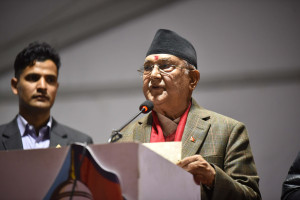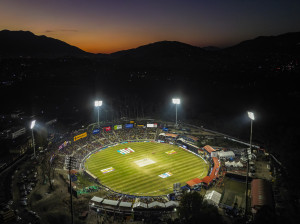Editorial
Bridges to hell
As defaulting contractors remain scot-free, shabby bridges continue to pose a threat to life and property.
In Nepal, not a year passes by without news reports of a few bridges collapsing in one place or the other. It has remained a sort of an annual affair for decades now, with no substantial change in the way we deal with the menace. In May 2014, an under-construction bridge spanning 80 metres over the Trishuli River at Kabilas fell down. A motorable bridge over a stream at Dhankute Road in Dharan that connected Koshi Highway and the BP Koirala Institute of Health Sciences collapsed in September 2015. A bridge over the Baulaha River on the East-West Highway was destroyed after a truck crashed into it in December 2016. The list goes on and on.
This year has not been an aberration. The Rahughat Bailey Bridge on the Beni-Jomsom road collapsed due to a landslip in the second week of July. A concrete bridge was slated to be built near the collapsed bridge, but the contractor had been on the run for over a year after the foundation had been dug. The Mauwa Bridge that joins Dhading and Chitwan on the Prithvi Highway went down with floodwater in July.
While some of the bridges collapse due to natural disasters including flooding and landslides, many other such incidents are man-made disasters due to shoddy construction and lack of regular maintenance. On Wednesday, the Post reported that all five bridges on a 35-km stretch of the Mid-Hill Highway in Parbat were in a dilapidated condition due to lack of maintenance and repair work. They were built 30 years ago and designed to have a life of around 50 years, but they are in a dilapidated condition for want of regular maintenance and have turned into death-traps.
As the country's construction sector remains gripped by a few dozen influential contractors with political backing, the same construction company gets the contract for building bridges despite defaulting on several other similar projects. It is this syndicate of poor constructors and their political protectors that have largely contributed to the collapse of bridges each year. The country has been facing what may be called the 'Pappu Construction syndrome' of constructing bridges by violating the approved designs, disregarding quality maintenance and delaying completion of projects.
Collapsing bridges also pose a great risk to humans, animals and property. We must not forget the tragedy in December 2007 when almost two dozen people died and over 90 were injured when a suspension bridge over the Bheri River in Surkhet collapsed. As recently as the third week of June this year, at least four people were injured when an under-construction bridge on the Mayadevi-Chhapiya road in Rupandehi collapsed. The lack of legal action against defaulting contractors means that the series of bridge collapses will continue in the years to come and even stop making news altogether. It is high time we started considering bridge collapses as cases of human rights violation and taking stakeholders to task for their actions.




 11.12°C Kathmandu
11.12°C Kathmandu












%20(1).jpg&w=300&height=200)

